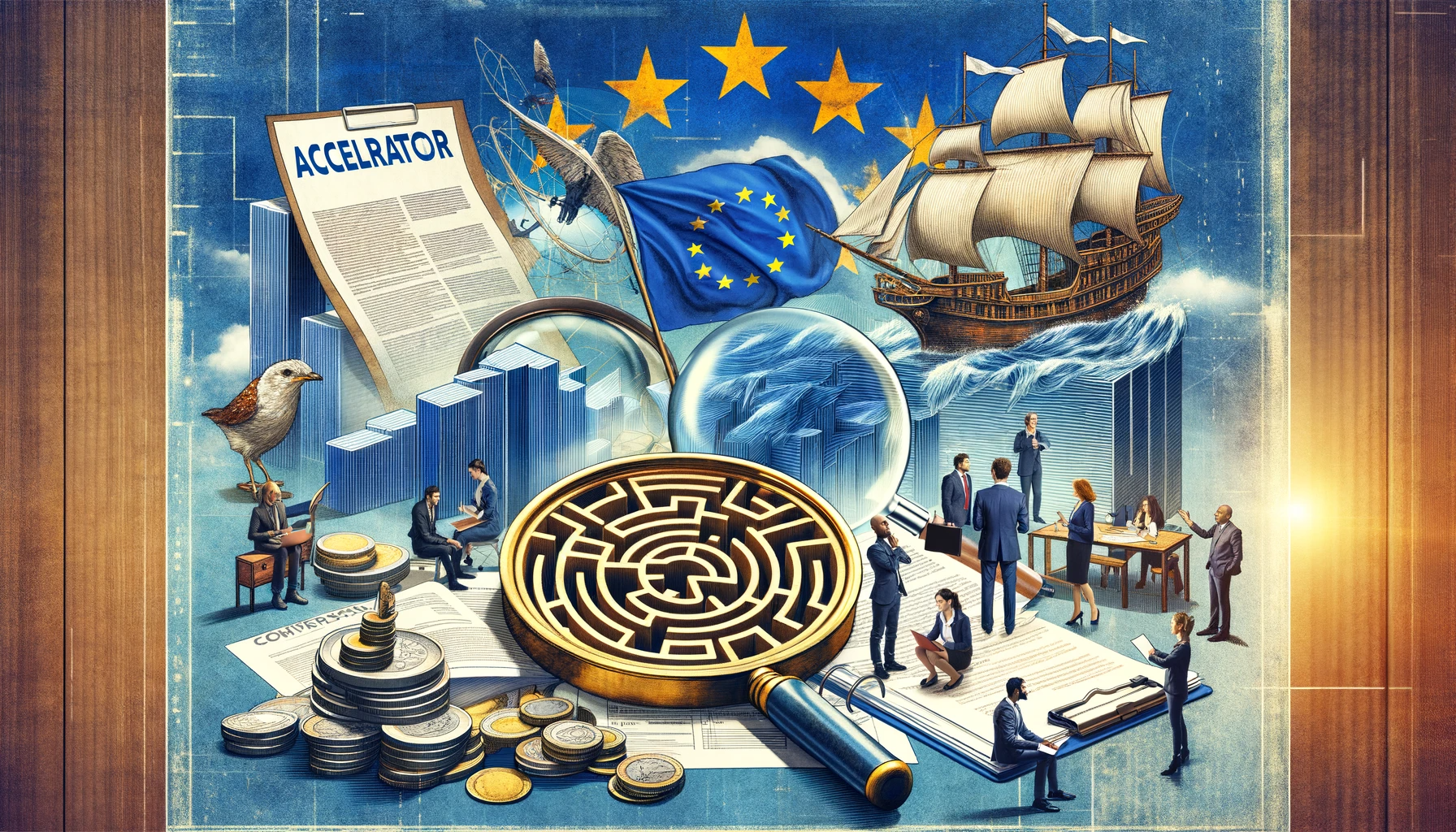Unveiling the Latest EIC Accelerator Results: A Comprehensive Analysis (November 8th 2023 Cut-Off, February 2024 Release)
FIND THE NEWEST RESULTS HERE The European Innovation Council (EIC) Accelerator program stands as a system of support for startups and Small- and Medium-Sized Enterprises (SMEs) across Europe, aiming to fuel innovation and technological advancement. With its latest results published on February 28th, 2024, the EIC Accelerator has once again demonstrated its commitment to fostering groundbreaking projects with a total budget allocation of €285 million. This analysis delves into the distribution of grants and blended financing, the success rates across different stages, and the geographical spread of the winning companies. Funding Breakdown: A Closer Look at the Allocation In the latest funding cycle, the EIC Accelerator has supported 42 companies, showcasing a diverse range of financing options tailored to meet the varied needs of Europe’s innovators. The distribution of funding types is as follows: Grant First: 12 companies (29%) were awarded grants as an initial funding step, highlighting the EIC’s flexibility in supporting early-stage innovations. Blended Finance: Dominating the funding landscape, 26 companies (62%) received blended finance, combining grants and equity to provide a robust backing for ventures ready to scale up. Equity Only: A single company (2%) secured equity financing, underscoring the EIC’s role in taking a stake in promising enterprises. Grant Only: 3 companies (7%) received grants without the equity component, focusing on projects with specific needs that can be met with direct funding. The Path to Success: Analyzing the Success Rates The EIC Accelerator’s selection process is rigorous, designed to identify projects with the highest potential impact. The success rates at each stage of the application process are as follows: Step 1: Approximately 70% of applicants pass this initial stage, though exact figures are not disclosed. Step 2: Only 22% of projects make it through, reflecting the increasing scrutiny applications undergo. Step 3: The final step sees a further narrowing, with a 17% success rate. Combined Success Rates: The cumulative success rate for applicants passing through Steps 2 and 3 is a mere 3.9%, while the overall success rate across all three stages is approximately 2.7%. Geographical Diversity: A Pan-European Impact The latest round of funding has benefited companies from 15 different countries, showcasing the EIC Accelerator’s pan-European reach. Germany leads the pack with 7 companies funded, followed closely by France with 6, and Spain and Sweden each with 5. Other countries with successful applicants include Finland (4), Italy (3), Israel (2), Netherlands (2), Norway (2), and several others with one company each, demonstrating the EIC’s commitment to fostering innovation across the continent. Conclusion The EIC Accelerator’s latest funding results highlight the program’s critical role in supporting the European innovation ecosystem. With a total budget of €285 million, the program has backed 42 companies across a wide range of sectors and countries, underlining the diversity and potential of Europe’s technological landscape. As the EIC Accelerator continues to evolve, its impact on fostering groundbreaking projects and scaling up SMEs is undeniable, making it a cornerstone of Europe’s innovation policy. With meticulous attention to supporting diverse financing needs, rigorous selection processes, and a commitment to geographical inclusivity, the EIC Accelerator is paving the way for a more innovative and resilient Europe. As we look forward to future rounds of funding, the results from February 2024 serve as a testament to the vibrant entrepreneurial spirit that thrives across the continent. Funding Data Type of Funding Grant first: 12 companies (29%) Blended finance: 26 companies (62%) Equity only: 1 company (2%) Grant only: 3 companies (7%) Total: 42 Companies Budget Total Budget: €285 million Cut-Off Date and Results EIC Accelerator Step 2 cutoff date: November 8th 2023 Publication of results: February 28th 2024 Success Rates Step 1: (approximately 70% since results are not published) Step 2: 22% Step 3: 17% Step 2 & Step 3 combined: 3.9% Step 1 & Step 2 & Step 3 combined: (approximately 2.7%) Funded Countries There are 15 different countries among the funded companies. Germany: 7 companies France: 6 companies Spain: 5 companies Sweden: 5 companies Finland: 4 companies Italy: 3 companies Israel: 2 companies Netherlands: 2 companies Norway: 2 companies Belgium: 1 company Bulgaria: 1 company Denmark: 1 company Ireland: 1 company Portugal: 1 company Slovakia: 1 company All 42 EIC Accelerator Winners from November 8th 2023











